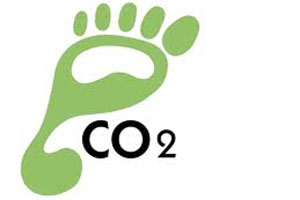Poultry production and climate change

The production of livestock generates greenhouse gas emissions, including carbon dioxide (CO2), nitrous oxide (N2O) and methane (CH4).
When animals respire they produce CO2. Methane is produced during enteric fermentation in the animal’s digestive tract and is released into the atmosphere. Manure can produce CO2, N2O and CH4 from microbial activity during storage and following land application. When viewed in a life-cycle analysis, the greenhouse gas emissions from the production of crops used to feed livestock and poultry as well as fossil fuel consumption during the rearing of livestock and poultry should also be considered. Increases in greenhouse gas levels in the atmosphere have been linked to global climate change. As the public has become more concerned with global climate change, they have sought information on the environmental footprint of various products, including food.
Because poultry have lower greenhouse gas emissions due to their lower enteric methane production rates than ruminant livestock species, many consider poultry to have an environmental advantage compared to many other animal protein sources.
The contribution of livestock and poultry production to greenhouse gas emissions has been estimated and reported by various groups; the estimated magnitude from livestock production varies by how the estimates are made (i.e. which gases and source types are considered), with the spatial area being considered in the estimates (i.e. for a specific region, country or for the entire world), and on how much of the production cycle is considered (i.e. livestock production cycle only, or full life-cycle analysis considering emissions from crop production and fossil fuel use).
The FAO report, Livestock’s Long Shadow, a life-cycle assessment of the global environmental impact of livestock production, estimates that livestock production is responsible for 18% of all anthropogenic greenhouse gas emissions in the world. This report considers emissions of CO2, N2O and CH4 from enteric fermentation, manure management (the third largest greenhouse gas emissions source, representing 14% of these emissions from agriculture), land application of manure, and also from deforestation that the FAO associates with livestock production in developing countries. The life-cycle analysis methodology used by the FAO however, has been questioned by other scientists involved in greenhouse gas emission quantification. Specifically, some have questioned the greenhouse gas contribution from deforestation.
(R.T. Burns, Proceedings World’s Poultry Congress, Salvador, Brazil, World’s Poultry Science Journal, 68, supplement1)
Ph.D., P.E.; Assistant Dean for Agriculture, Natural













